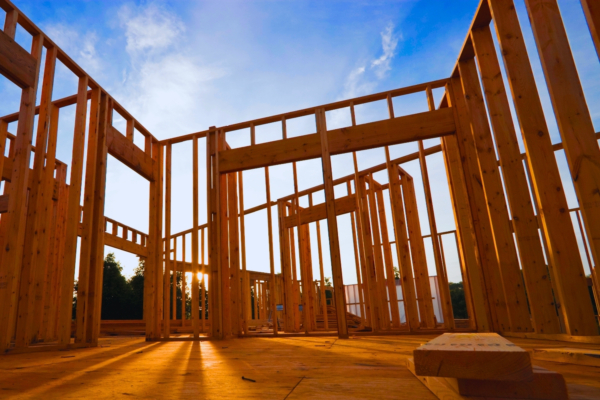
How to Buy an Apartment Complex
Are you ready to take your real estate game to the next level? If you have dabbled in single-family investments in the past, you may wonder what comes next. It is only a matter of time, then, before you find yourself researching how to buy an apartment complex as your next commercial rental project.
Buying an apartment building may seem daunting, but it can be a savvy investment, especially for real estate investors who already have some experience in purchasing rental properties. Read on to learn more about apartment complex finances.
Advantages of Buying an Apartment Complex
An apartment complex is a multifamily property with five or more units. Buying an apartment complex is a big decision, but it has several advantages over a duplex or similar residential property.
Less risk
Apartment complexes are costly, but they reduce risk and increase profit potential because of their many units. Unlike the owner of single-family homes, apartment owners will still have rental income from other building units if a tenant moves out.
- Ability to protect your revenue stream by having a larger tenant mix.
- Stagger lease agreement start-dates to manage your rent roll/property management (i.e., you don’t want all unit’s lease to mature at the same time).
Economies of scale mean lower maintenance costs per unit
- Lower per-unit operating expenses. Unexpected costs – such as the need for a roof replacement – are less troublesome as the cost is spread out amongst all the units.
- Ratio Utility Billing System (RUBS). In many older multifamily properties, units are not individually metered for utilities, so property owners use this system. It is a method of determining a resident’s utility bill based on unit square footage, the number of people living in a unit, or a combination of the two.
- Unit upgrades. Buying in bulk can sometimes provide a lower cost per item needed for improvements.
Apartments are tax-efficient
Even though apartments are considered commercial real estate, the use remains residential and enjoy a slightly faster depreciation schedule than other commercial assets.
Apartments hedge against inflation
The average apartment lease is usually one year, which allows a landlord to monitor market comps rents. Rental rates tend to move up with inflation. In contrast, commercial leases are usually locked for three or five years or increase at 1% annually.
Loan approval is based on the property’s financial characteristics
Lenders tend to be more focused on the profit-generating potential than on the investor’s finances. Their primary concern is whether the property’s income will exceed the required payments from the investor.
- Gross Rents Minus Expenses = Net Operating Income (NOI). Net Operating Income is what pays your loan payment and provides you with the ability to distribute income to owners/investors.
Opportunities to generate supplemental income
Investors have plenty of opportunities to generate supplemental income from property amenities, such as a laundry room, a gym, a pool, or an office space. The cost of investing in these amenities is spread out over all the units. It is pretty easy to recoup the costs by charging for these amenities.
Something as simple as moving the trash bill from the landlord to the tenant can increase your investment value by several thousands of dollars due to economies of scale.
Types of Apartment Complexes
Before investing, it is important to understand the four types of apartment complexes.
- Class A buildings are typically under ten years old and have an array of amenities available.
- Class B buildings are under 20 years old. They are in good condition but have fewer amenities than class A buildings.
- Class C buildings are 30 years old or less, have little to no amenities, and may need some renovations.
- Class D buildings are older units, typically in lower-income areas. They have no amenities and often require significant repairs.
Finances to Consider When Looking at Properties
As you begin to look at various commercial properties, there are several financial factors to keep in mind.
- Rent rolls. This document will help you identify future cash flow issues based on your tenant history. It details the present rent amounts for each unit and the number of beds and baths. It also contains information on the current tenants’ names, each lease’s terms, and the security deposit amounts.
- Occupancy rates. This calculation shows how much of your time is occupied with rent-paying tenants. It also helps to contextualize the cost of maintenance, which typically accounts for 40% of the income generated from rent and other sources.
- Vacancy rates. Lenders, appraisers, and underwriters use this calculation to assess the effective rents (gross potential income less vacancy).
- Depending on market conditions, asset class, and other factors, one could expect 5-15%.
Location and Cost Considerations
When choosing a location, there are several important things to consider. These factors include the area’s employment and economic data, crime and safety data, and the potential for increased property values over the next few years.
In addition to location considerations, you should consider a few crucial elements of cost.
Utility billing
Shared utilities can pose a problem if tenants that are not paying the bill themselves overuse utilities and increase your expenses. In many cases, property owners will implement a ratio utility system where the monthly utility expenses are divided by the number of units. Each tenant’s portion of the bill is determined by the size, number of bedrooms and bathrooms, etc.
Health risks
As mentioned in the documentation section, a property needs to be inspected for potential health risks. Older properties tend to be riskier, as they can be exposed to contaminants such as lead paint or asbestos. A new owner is responsible for addressing these issues, which can get expensive. You should consider whether that expense is worth it to you or if you should look elsewhere.
Insurance costs
Older buildings or buildings in more run-down areas tend to have higher insurance costs. When considering properties, you should always inquire about current insurance costs. You should also check with a few other insurers to verify that the current owner is not overpaying or underpaying.
Facility issues
There are a few other facility issues that can cause additional expenses to investors. Plumbing that needs repairs can be expensive and can also increase the risk of contamination. Roofing issues, such as a flat roof, can cause problems with leakage. Compared to brick or concrete exteriors, buildings with wooden frames are more likely to experience rotting and are more prone to fires.
Investment Strategies
In addition to the upfront costs, specific property types might be better as short-term or long-term investments.
- Stabilized or Buy and Hold Properties. These properties are typically described as 90% of physical occupancy for greater than 90 days. It is important to understand the difference between physical and economic occupancy (such as leasing an apartment versus collecting rent payment).
- Non-stabilized or Value Add properties. These properties usually need improved management to address deferred maintenance, down units, tenant payment issues, and more. Owners forego immediate cash flow today, hoping that once “improvements” are made, they’ll recognize future capital gain and/or larger cash flow tomorrow.
Capitalization Rate Considerations
Understanding your capitalization rate (or cap rate) is crucial. This is one of the best ways to determine the potential annual return on a rental property.
The formula is as follows:
Net Operating Income (NOI) / Market Value (or Purchase Price)
For example, if a property has a market value of $800,000 and an NOI of $90,000, the cap rate is 8.9%. In general, higher cap rates are better, so if you are comparing two properties, you should go for the one with the higher cap rate.
It is critical to also take a deep dive into understanding the line items’ expenses. You’ll soon see a difference between well-run properties versus those that are not.
Securing a Loan
You will likely need to secure a commercial loan to finance the purchase of an apartment complex. Loan sources include commercial banks, seller financing, and private loans.
- Traditional Bank Lending (Bank or Credit Unions)
- Government Sponsored Agency Lender (Fannie Mae or Freddie Mac)
Apartment loans range from a term of several years up to 25 years. The loans may be fixed or adjustable rates and, depending on the lender, may come with prepayment penalties. This is an industry norm in commercial real estate. The lending institution is your partner and your best advocate to assess all due diligence items properly.
Securing recourse loans means that the creditor can seize the borrower’s personal property in the event of a default. Non-recourse loans are where a creditor cannot go after the borrower’s personal property in the event of a default.
Finding a broker
It’s a good idea to work with a multifamily loan brokerage or advisory firm. A good advisor will leverage personal relationships and help you find the best financing option for your situation and goals. They can also help with the aspects of financing that are confusing, including documentation, and ensure that you are getting the best borrowing terms.
Qualifying for a loan
Because debt increases leverage, the less money you put down at the outset, the more relative profit you can generate. Approval criteria vary by loan type, but typically, a lender needs good credit (660+) to be considered by a lender.
Borrowers will also often need to put down about 25% of the total loan amount as a down payment. Your credit score and your deposit will play a key role in determining your interest rate.
Required Documentation
It can be challenging to know the more complicated final steps of how to buy an apartment complex. You’ve made it to the final phase, so be sure to follow these steps to prepare the required documentation you need to close on the property.
Appraisal
Before purchasing, you need to have the property professionally appraised. There are a few methods appraisers may use:
- The income approach estimates the value of a property based on its potential income.
- The sales comparison approach evaluates the value of the complex based on the sales of similar properties.
- The cost approach considers the estimated cost to rebuild a property, plus the land’s value, minus depreciation.
Physical needs assessment
This report states the current condition of the property and determines what needs to be repaired or replaced. From this information, you can calculate the replacement reserves, which are funds that you can be expected to need each year for repairs.
Phase I environmental assessment
This report inspects a property for environmental issues that could pose a threat to residents and the community. If contamination is found in the initial assessment, Phase II or Phase III assessments may be required.
Property survey
This report records the boundaries of the property. It takes note of any title issues that could affect the property’s use.
Conclusion
Apartment complexes do not come cheap. That said, if you are at a point in your real estate investing career where you are ready to take the next step, they might be worth the investment. Before you take the plunge, talk to other individuals who have taken the plunge into commercial real estate. Using this list as your starting point, you may find that your research opens doors you thought were otherwise closed.
Last Updated On 10/20/20
Thinking About Starting a Business?
Let our Commercial Lending team help you build your business plan.

